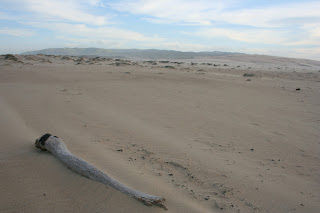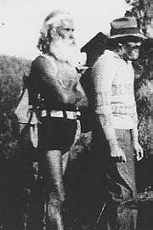 |
| The solitude of the Dunes |
| George Blais (L) at the Dunes |
The Dunites even published their own magazine which was distributed nationally called the “Dune Forum,” with contributions by photographers such as Ansel Adams. The magazine was heavy on intellectual style and expensive for the time at 35 cents. The publication ran for five issues before it too succumbed to forces greater than itself. Eventually the Dunites left their Bohemian ways, as life in the dunes simply could not be controlled and to this day, the sands shift where they will. Today a visit to the dunes is still something of an ethereal experience; it’s still relatively isolated, but the stark beauty is worth the drive. But pack a sweater, the winds can be fierce. The official visitors center is located in the town of Guadalupe and provides maps, historical information as well as schedules of ranger led hikes and photography.http://www.dunescenter.org/
 |
| The fierce winds at the Dunes create windswept trees like this |


No comments:
Post a Comment